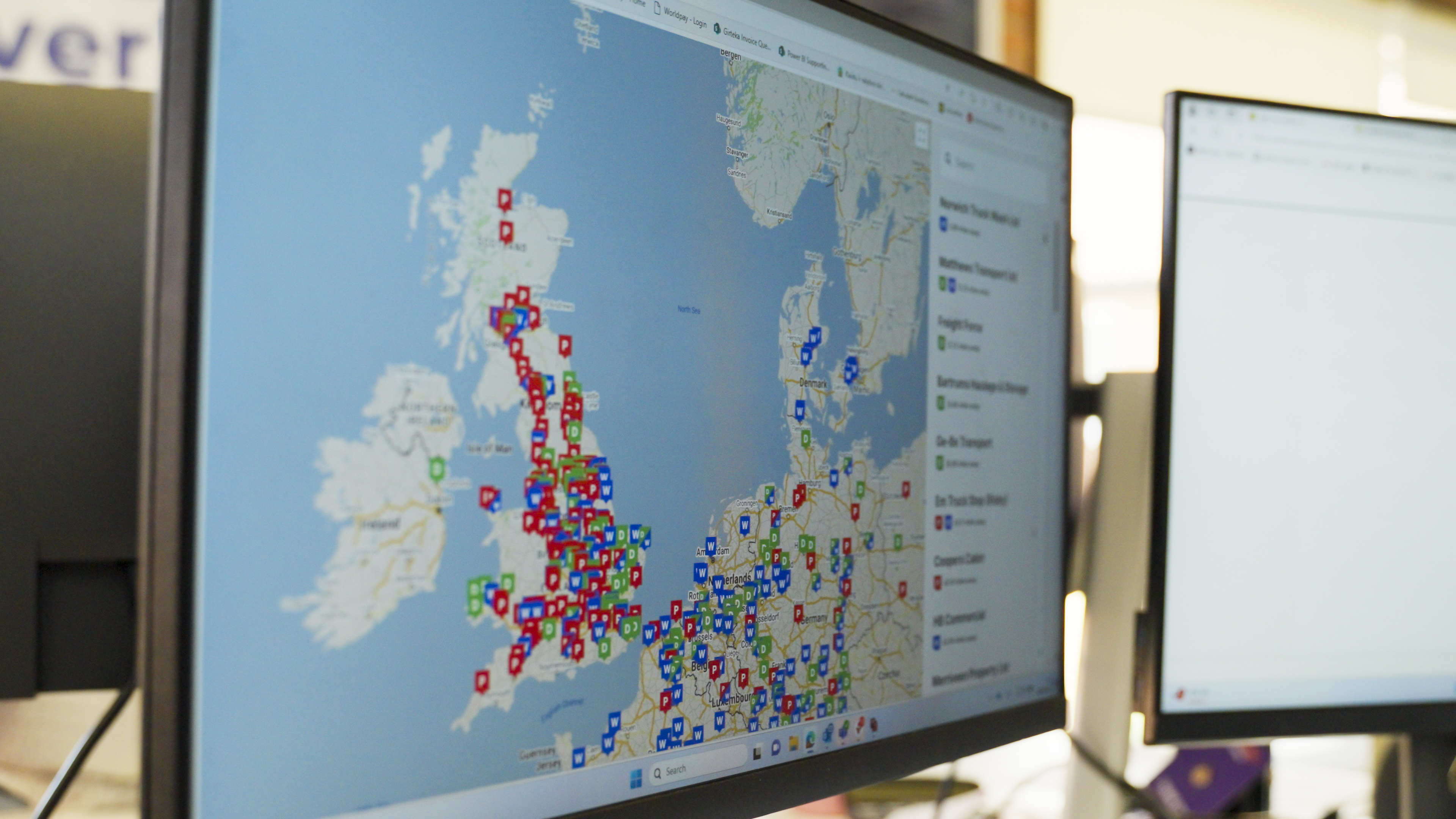
Miranda Blake
Топливные карты в транспорте - как SNAP упрощает жизнь автопарка
Создано: 20.11.2024
•
Обновлено: 20.11.2024
Необходимость в эффективных решениях для управления автопарком (https://snapacc.com/fleet-operators/) как никогда актуальна. SNAP Account - это мощная альтернатива традиционным топливным картам, предоставляющая комплексную, удобную платформу, которая упрощает платежи и повышает операционную эффективность. Решая ключевые проблемы, такие как контроль затрат, административное бремя и удовлетворенность водителей, мы прокладываем путь к новой эре в управлении автопарком.
Комплексное платежное решение
SNAP Account - это универсальное решение для оплаты услуг автопарка, которое революционизирует процесс оплаты водителями различных расходов. Используя только номерной знак автомобиля, они могут оплачивать целый ряд услуг, включая:
- Парковка: Доступ к более чем 380 специализированным паркингам для грузовиков по всей Европе гарантирует, что у них всегда будет безопасное и надежное место для отдыха.
- * Мойки:* Благодаря наличию более 230 пунктов, поддержание чистоты транспортных средств не требует особых усилий.
- Топливо: Водители могут заправляться на партнерских станциях, что упрощает работу. Плата за проезд через Дартфорд: Автоматизированные платежи за проезд избавляют от необходимости распоряжаться наличными.
Мы значительно снижаем бремя ношения нескольких карт или наличных денег, поскольку наше программное обеспечение объединяет эти различные платежи в единую систему.
Упрощенное администрирование
Для менеджеров автопарков задачи, связанные с топливными картами, могут быть непосильными. К счастью, SNAP Account упрощает эти процессы несколькими способами:
- Единый счет-фактура: Все операции сводятся в один счет-фактуру, что значительно сокращает бумажную работу и административные накладные расходы.
- Автоматизированное ведение учета: Эта функция упрощает налоговую отчетность и управление финансами, экономя драгоценное время.
- Управление грузовиками: Есть возможность добавить столько транспортных средств, сколько необходимо, и сгруппировать их по типу или назначению.
Такая автоматизация и централизация позволяет руководителям автопарков сосредоточиться на стратегических решениях, а не на бумажной волоките.
Усиленный контроль затрат
SNAP Account предлагает мощные инструменты для оптимизации расходов:
- Лимиты расходов: Руководители автопарков могут устанавливать ограничения и санкционировать покупки, обеспечивая соблюдение бюджета.
- Скидки: Эксклюзивные тарифы на заправках нашего партнера, Certas Energy, позволяют значительно сэкономить.
- Нулевая плата за настройку: В отличие от традиционных систем топливных карт, здесь нет первоначальной настройки или абонентской платы, что облегчает начало работы.
- Нет скрытых платежей: Мы исключаем наценки, обычно взимаемые компаниями, предоставляющими топливные карты для обслуживания автозаправочных станций, обеспечивая прозрачность ценообразования.
Эти функции позволяют компаниям эффективно управлять расходами на топливо и обслуживание, что ведет к повышению рентабельности.
Хотите узнать, как другие получают выгоду от SNAP? [Прочитайте наше тематическое исследование] (https://snapacc.com/newsroom/efficiency-on-the-road-how-delintra-sp-zoo-are-optimising-their-fleet-with-snap/).

Преимущества водителя
SNAP Account разработан с учетом интересов водителя и предлагает множество преимуществ, которые повышают удобство работы на дороге:
- * Потоковые платежи:* Забудьте о жонглировании несколькими картами или наличными. Простота использования только номерного знака автомобиля для совершения транзакций изменит ситуацию.
- Расширенная сеть: Благодаря доступу к более чем 600 сервисным партнерам по всей Европе они могут легко найти необходимые им услуги.
- * Возможность предварительного бронирования:* Приложение intruck позволяет легко бронировать места для парковки грузовых автомобилей, обеспечивая водителям возможность заранее занять свои места.
Упрощая жизнь на дороге, мы повышаем эффективность работы автопарка и увеличиваем удовлетворенность водителей, что делает нас предпочтительным выбором для многих операторов.
Безопасность и предотвращение мошенничества
В отрасли, где безопасность имеет первостепенное значение, SNAP Account включает в себя несколько надежных функций для защиты активов автопарка:
- * Зарегистрированные номерные знаки:* Каждая транзакция основана на зарегистрированном номерном знаке, что гарантирует, что платежи могут совершать только уполномоченные сотрудники и транспортные средства.
- Контроль расходов: Руководители могут устанавливать лимиты, снижая риск нецелевого использования.
- Безопасные парковки: Многие партнерские точки предлагают повышенные меры безопасности, обеспечивая спокойствие водителей.
Все эти меры позволяют создать безопасную среду для работы автопарка, защищая как транспортные средства, так и финансы.
Эволюция топливных карт
Топливные карты уже много лет являются краеугольным камнем управления автопарком, однако традиционные топливные карты часто сопровождаются скрытыми комиссиями, ограниченными возможностями обслуживания и громоздкими административными процессами. В отличие от них, SNAP Fuel устраняет эти недостатки, предлагая современное, комплексное решение, отвечающее требованиям современного управления автопарком.
Основные различия между SNAP и стандартными топливными картами

Отзывы покупателей
Интересно узнать, как другие воспользовались преимуществами SNAP Account? Вот что говорят некоторые операторы автопарков:
- Fenwick Haulage: "SNAP изменил нашу работу. Больше нет хлопот с квитанциями; наши водители просто используют свою регистрацию. Это меняет дело". L Cunningham & Daughter Haulage: "Гибкость, которую обеспечивает SNAP, неоценима. Наши водители могут парковаться, не беспокоясь о предоплате, а выставление счетов происходит без проблем". Wincanton: "Простота использования не имеет себе равных. Наши водители могут заказывать парковку и оплачивать ее без использования наличных или карт, что значительно упрощает их работу." Джек Ричардс: "SNAP повысил нашу эффективность и значительно сократил расходы. Это незаменимый инструмент для нашего автопарка".
Если вы хотите воспользоваться преимуществами своего автопарка, свяжитесь с нами по телефону +44 (0)1603 777242.



